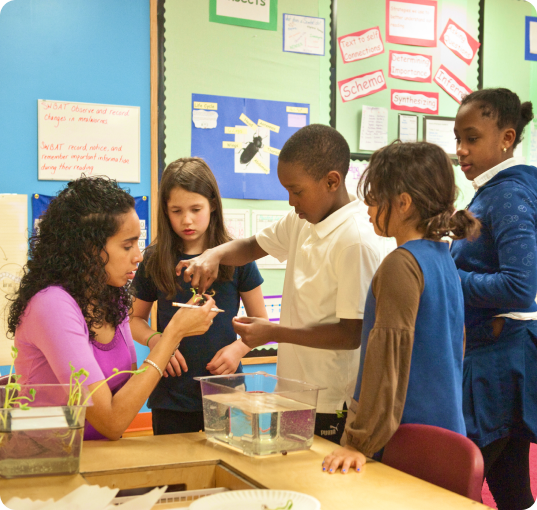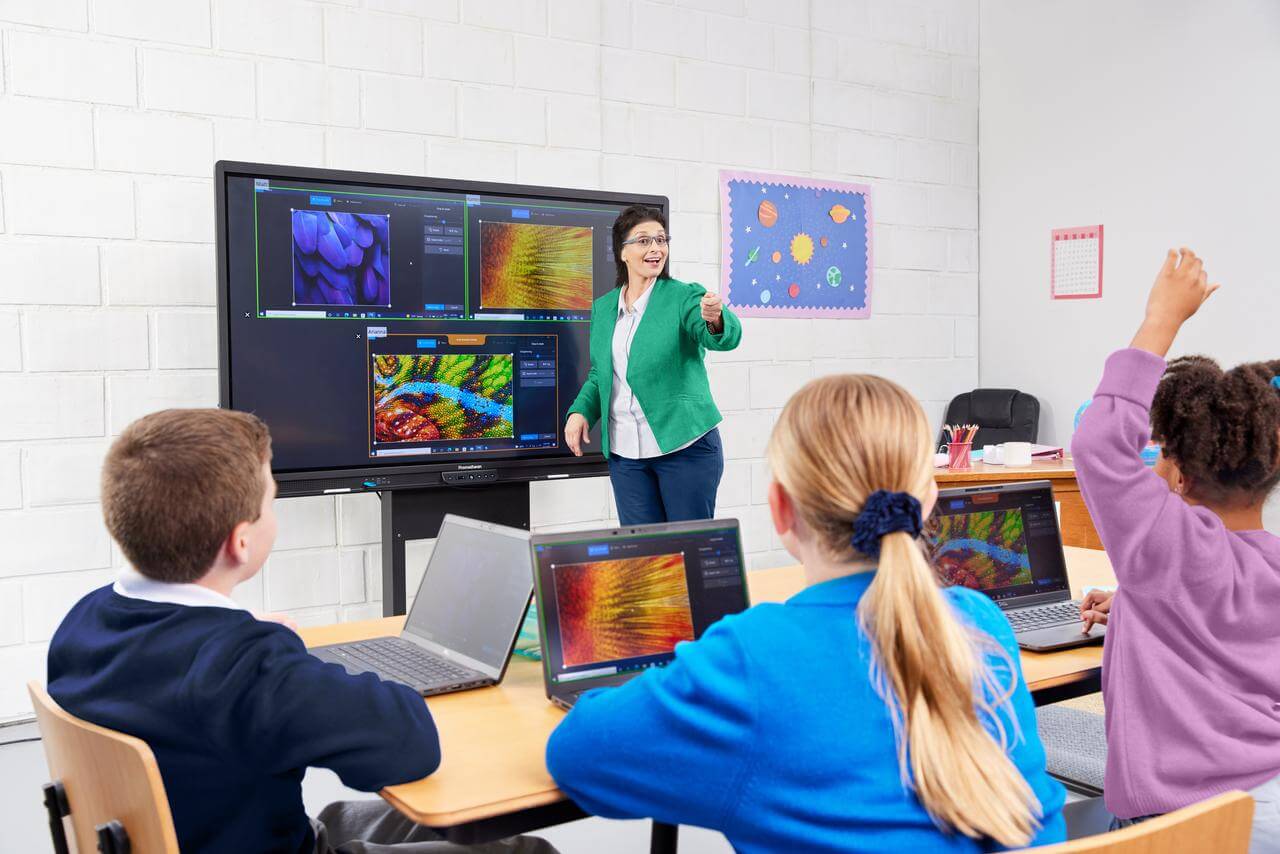The Best Primary Science Tuition Singapore for Effective Learning Methods
The Best Primary Science Tuition Singapore for Effective Learning Methods
Blog Article
A Comprehensive Overview to the Numerous Discovering Methods in Main Science Guideline
The expedition of varied understanding methods in main scientific research instruction provides a possibility for educators to improve student involvement and understanding substantially. By taking a look at hands-on discovering techniques, inquiry-based methods, and collaborative methods, we can determine reliable practices that accommodate different discovering designs. Furthermore, the combination of modern technology and separated guideline plays a vital role in fostering an inclusive setting. Nonetheless, the question remains: exactly how can these approaches be efficiently carried out in the classroom to optimize their impact? The answer hinges on a more detailed evaluation of each approach and its ramifications for mentor science.

Hands-On Discovering Methods
Hands-on knowing techniques play a critical role in primary scientific research guideline, involving trainees in active exploration and testing. These approaches allow students to engage directly with materials and sensations, fostering a deeper understanding of clinical concepts. By utilizing manipulatives, models, and real-life experiments, instructors create a setting where trainees can observe, hypothesize, and evaluate their concepts.
Such strategies not only boost understanding however additionally grow essential thinking and analytic skills. When trainees join tasks like developing simple devices, growing seeds, or conducting chain reactions, they are motivated to ask concerns and seek solutions via their own monitorings. This experiential strategy aids to demystify complex scientific concepts, making them a lot more accessible and relatable.
Furthermore, hands-on discovering promotes collaboration among peers, as students typically operate in groups to conduct experiments or share searchings for. This synergy not just enhances their knowing experience but also develops essential social skills. Inevitably, incorporating hands-on methods in primary scientific research direction promotes a lifelong love of learning and inquisitiveness about the all-natural world, laying a strong structure for future academic searches in science and past.
Inquiry-Based Knowing
Inquiry-based learning is an educational technique that urges trainees to ask questions, explore sensations, and construct their very own understanding of scientific ideas. This approach moves the emphasis from conventional teacher-led instruction to a much more student-centered experience, where learners take the campaign in their educational journey. By promoting inquisitiveness, inquiry-based understanding advertises deeper engagement with the material, permitting trainees to discover subjects in a significant context.
In practice, this method commonly entails hands-on experiments, observations, and crucial reasoning tasks that align closely with the clinical technique. Students are urged to create hypotheses, layout examinations, and analyze data, which grows vital skills such as logical and analytical thinking. The duty of the educator in this structure is to promote expedition, guiding pupils through the inquiry process while encouraging independent thought and collaboration.
Moreover, inquiry-based knowing nurtures a sense of possession over the knowing procedure, inspiring trainees to seek expertise actively. This approach not just boosts understanding of scientific concepts however additionally cultivates a long-lasting love for knowing, gearing up pupils with the abilities essential to navigate a significantly complex world.
Collaborative Discovering Approaches
Joint discovering approaches equip students to take part in purposeful interactions with peers, cultivating a shared duty for their educational results. In key scientific research direction, these methods urge students to work together to check out clinical principles, resolve troubles, and conduct experiments (primary science tuition Singapore). By joining team activities, pupils can leverage diverse perspectives, permitting richer understanding and retention of scientific knowledge
One secret element of joint learning is the focus on communication abilities. Pupils must express their ideas, pay attention proactively to others, and bargain concepts, every one of which are essential expertises in both real-world and scholastic contexts. This social communication not just improves their understanding of scientific concepts but also advertises team effort and dispute resolution skills.
Moreover, joint learning typically leads to raised inspiration and engagement. When trainees see the worth of their payments within a group, they are most likely to take possession of their learning trip. Teachers can promote this procedure by developing structured team jobs that line up with educational program goals while supplying support on effective cooperation methods. Generally, including collective understanding approaches in key scientific research guideline grows a dynamic knowing atmosphere that prepares pupils for future scholastic and social difficulties.
Modern Technology Assimilation in Scientific Research
The assimilation of modern technology in primary science direction enhances learning experiences by Clicking Here supplying innovative devices and resources that sustain numerous training techniques, including collaborative discovering - primary science tuition Singapore. The usage of digital platforms, simulations, and interactive applications allows trainees to engage deeply with clinical concepts, assisting in a much more hands-on method to understanding
Online laboratories, as an example, make it possible for students to carry out experiments securely and successfully, promoting inquiry-based knowing. These devices can replicate real-world scientific circumstances, allowing students to visualize intricate processes that would certainly be hard to replicate in a standard classroom setting. Technology promotes communication and collaboration among students, as they can share searchings for and function with each other on projects via on-line systems.
Additionally, multimedia presentations and instructional video clips can improve lessons by accommodating diverse discovering styles, making abstract ideas a lot more easily accessible. Information evaluation devices additionally encourage trainees to gather and interpret scientific information, reinforcing crucial thinking abilities. In general, the calculated consolidation of innovation in primary science instruction not just enhances engagement however also prepares pupils for a highly innovative culture, outfitting them with essential abilities for future scientific endeavors.
Set Apart Instruction Techniques
Distinguished instruction methods are essential for addressing the diverse requirements of learners in main scientific research education. These strategies allow educators to customize their training methods to accommodate differing capacities, passions, and discovering styles within the class. By using set apart instruction, teachers can produce an inclusive atmosphere that promotes engagement and enhances understanding of scientific concepts.
One reliable strategy is to utilize versatile grouping, which enables students browse around these guys to work together with peers at comparable ability degrees or with varying point of views. This technique encourages peer understanding and advertises crucial reasoning. Additionally, offering choices in tasks can empower students, enabling them to choose projects that reverberate with their rate of interests while still satisfying curricular objectives.
In addition, integrating tiered assignments is another useful technique. By making jobs with varying levels of intricacy, teachers can ensure that all trainees are properly tested, no matter of their efficiency. Using formative assessments to determine recognizing further makes it possible for educators to adjust their training techniques dynamically, making certain that each learner obtains the assistance they need.
Eventually, applying set apart instruction approaches in primary scientific research education not only boosts pupil knowing end results however also cultivates a passion for science, preparing students for future scholastic quests.

Verdict
In summary, efficient primary scientific research instruction demands a multifaceted technique that encompasses hands-on discovering, inquiry-based techniques, and collective techniques. The combination of innovation and differentiated instruction additionally provides to diverse understanding styles, promoting an environment helpful to exploration and vital reasoning.
The exploration of varied learning methods in key scientific research instruction offers an opportunity for instructors to boost trainee interaction and understanding considerably.Hands-on learning strategies play an essential role in primary science guideline, involving pupils in active expedition and testing.Inquiry-based discovering is an educational technique that encourages pupils to ask questions, examine sensations, and construct their very own understanding of clinical concepts.Collective learning methods equip pupils to involve in significant communications with peers, promoting a common duty for their academic outcomes. In general, including collective discovering methods in primary Read More Here scientific research direction cultivates a vibrant knowing environment that prepares trainees for future academic and social challenges.
Report this page